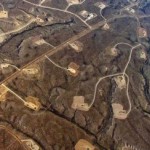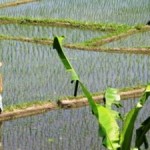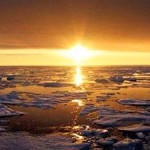
Snowpack, an essential source of drinking water and agricultural irrigation for billions of people, could shrink significantly within the next 30 years, according to a study led by Stanford University climate change researcher Noah Diffenbaugh.
The study, published in the journal Nature Climate Change, forecasts the effect of climate change on Northern Hemisphere snowpack through the 21st century in the Western United States, Alpine Europe, Central Asia and downstream of the Himalayas and Tibetan Plateau. The news is particularly troubling for snowpack-dependent California – the largest producer of agriculture products in the country and the sixth-largest agriculture exporter in the world.
“The Western U.S. exhibits the strongest increases in the occurrence of extremely low snow years in response to global warming,” Diffenbaugh said. “It also exhibits some of the strongest decreases in runoff that occurs during the growing season.” Diffenbaugh is an Assistant Professor in Stanford’s Department of Environmental Earth System Science and a center fellow at the Stanford Woods Institute for the Environment.
Less snow accumulation, increased cold season runoff and decreased warm season runoff could lead not only to overwhelmed reservoirs and flooding in winter, but also to insufficient water for agriculture in spring and summer when demand is highest. Hydroelectric production, water-dependent ecosystems and snow-dependent recreation industries could also suffer. On top of that, early spring snowmelt has been associated with an increase in wildfires, insect pests and species extinctions in the Western United States and elsewhere.
By filling reservoirs and watering crops when warmer, drier weather sets in, mountain snowpack has become vital to people and ecosystems in regions such as the Western United States, Alpine Europe, Central Asia and downstream of the Himalayas and Tibetan Plateau – home to more than 50 percent of the world’s population.
“If we look at the systems that humans currently have in place for managing water resources, we see that much of the Northern Hemisphere is dependent on snowpack for water storage,” Diffenbaugh said. “Our results suggest that global warming will put increasing pressure on both flood control in the cold season and water availability in the dry season, and that these changes are likely to occur in some of the most densely populated and water-stressed areas of the planet.”
The connection between rising global temperatures and disappearing snowpack has long been evident. Diffenbaugh and his fellow researchers took a new look at the issue by examining predicted extremes in snowpack accumulation and runoff. Using advanced climate modeling techniques, they compared a century’s worth of predicted future data for precipitation, accumulation and runoff with the average and extreme rates for the same phenomena during the 30 years between 1976 and 2005.
The researchers found that the occurrence of low snow years will likely intensify throughout most snow-dominated areas of the Northern Hemisphere during this century, becoming the norm more than 80 percent of the time over most of North America, western Eurasia and southeastern Eurasia by 2070.
The areas of North America and Eurasia predicted to have the highest number of low-snow years are also predicted to have extremely low snow accumulation.
“Our analysis highlights the potential impacts of climate change if greenhouse gas emissions continue on their current trajectory,” Diffenbaugh said. “While the greatest impacts are likely to occur at higher levels of global warming, our results highlight the fact that continued emissions over the next few decades are likely to substantially reduce snow accumulation in a number of regions, increasing the risk of both flooding and drought in different parts of the year.”
The study’s co-authors include Moetasim Ashfaq, a research scientist at Oak Ridge National Laboratory (ORNL), and Martin Scherer, a research assistant in Stanford’s Department of Environmental Earth System Science. The study was made possible by grants from the National Science Foundation (NSF), the National Institutes of Health and the U.S. Department of Energy.
Source: By Rob Jordan, Communications Writer, Stanford Woods Institute for the Environment.














